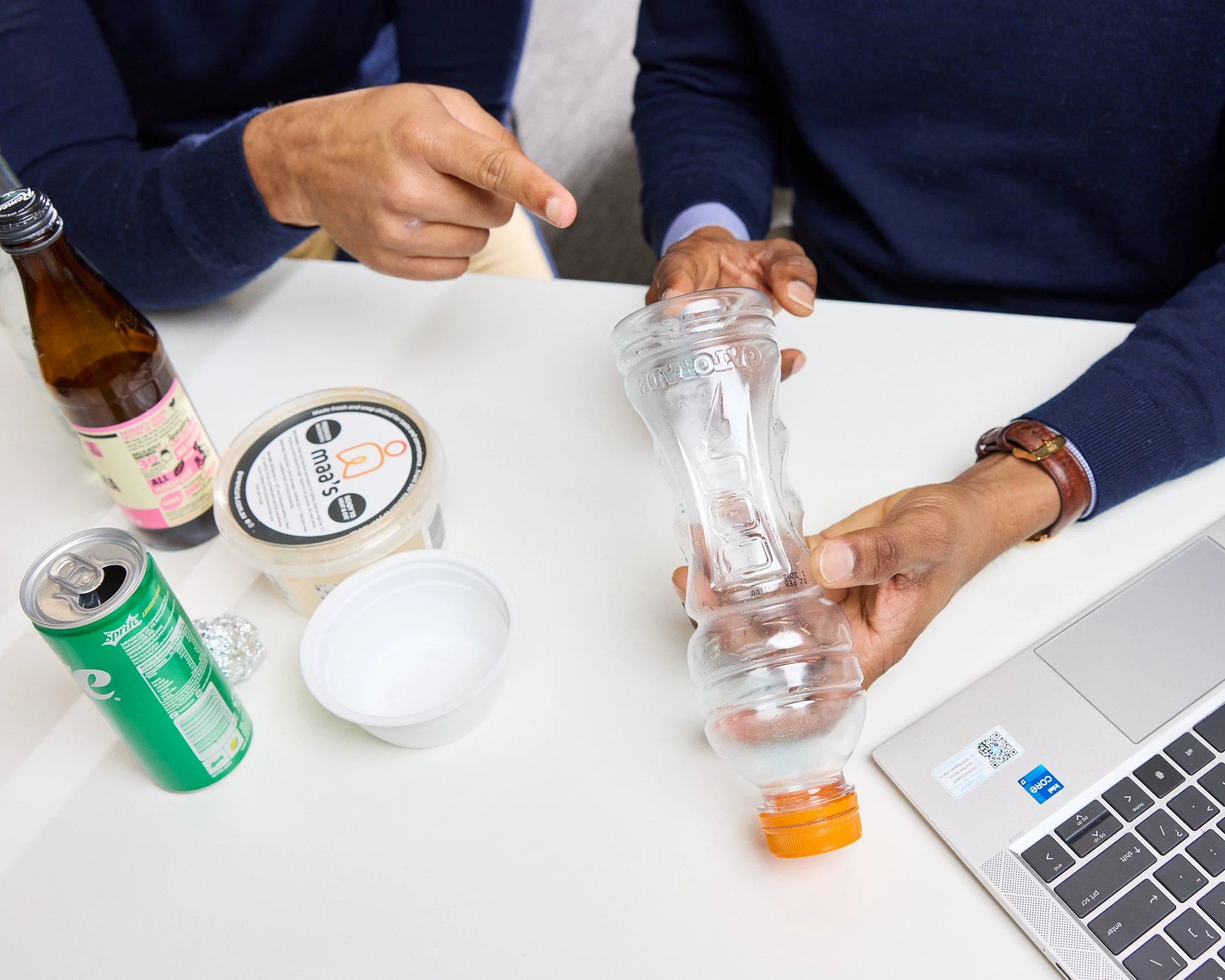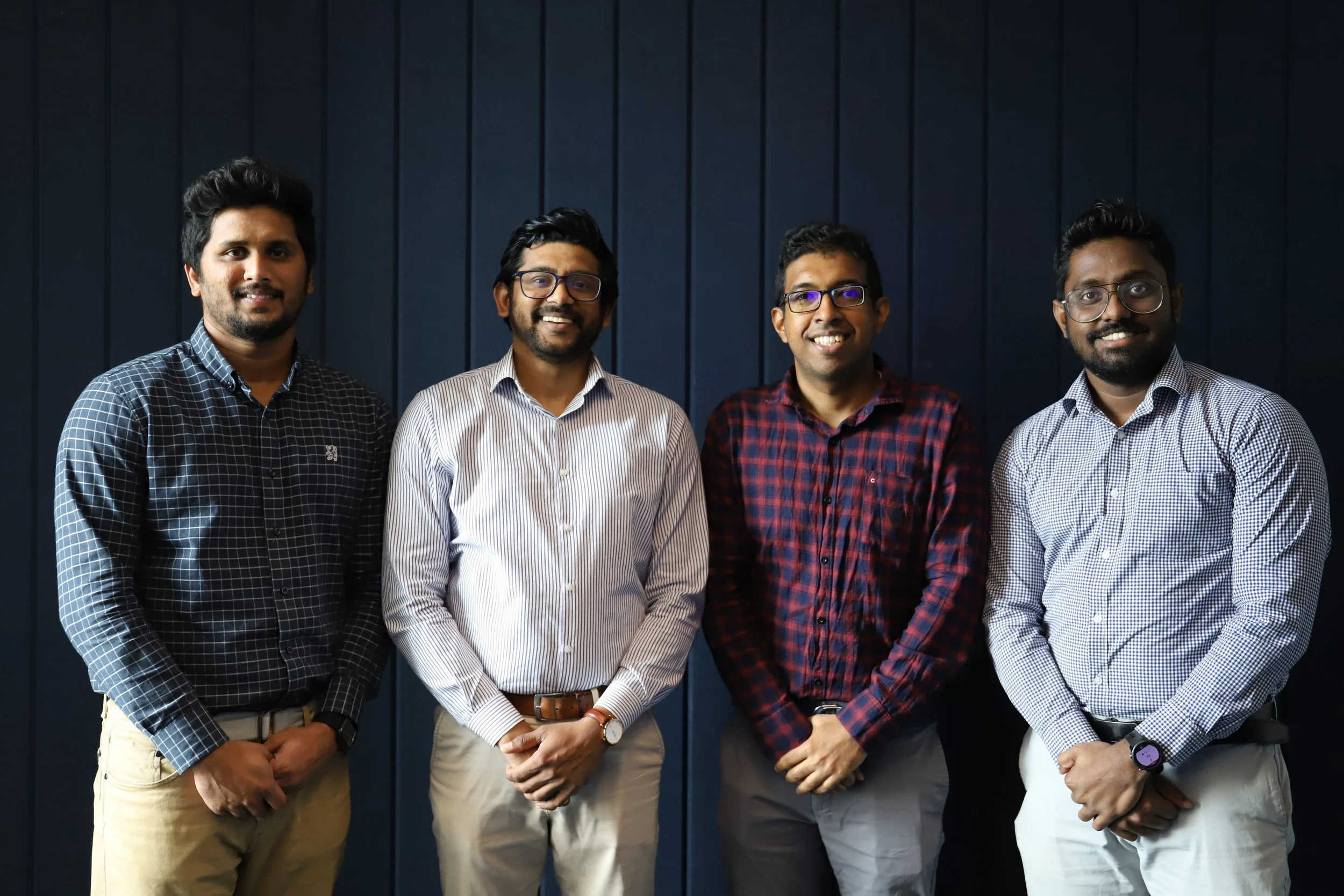From Waste to Worth: Pixalens is revolutionising recycling with AI vision and robotics
As Australia grapples with the mounting challenge of plastic waste and landfill overflow, one team of University of Melbourne researchers is hoping to turn the tide by teaching machines to see and sort recycling. PixaLens is creating a new generation of smart recycling solutions, using AI vision systems and robotics to identify, audit and sort waste with precision, helping to localise recycling efforts and make the circular economy truly viable.
Australia’s recycling system needs a smarter eye
In 2019, Australia banned the export of plastic waste, a bold environmental move that revealed major gaps in our local recycling capabilities. The industry lacked the advanced technology needed to efficiently audit and sort waste at scale. Much of the existing infrastructure relied on overseas AI and robotic systems, which weren’t optimised for Australian waste streams.
When researchers Shanaka Kristombu Baduge, Gihan Ruwanpathirana, Hasala Sakvithi, and Sadeep Thilakarathna met with an industry leader in plastic recycling, they discovered the scale of the problem. Waste wasn’t being audited properly, valuable materials were being sent to landfill and recycling plants lacked the data needed to monitor infeed material, output material quality and overall factory performance for variable waste, directly affecting the pricing and profitability of materials.
“We realised the Australian recycling industry didn’t just need automation, it needed smart automation designed for our unique context,” Shanaka explains. PixaLens was born out of this critical need: to bring intelligent, localised waste-sorting systems to Australia’s recycling industry and beyond.
Smart vision and robotics for precision recycling
PixaLens is developing an AI-powered vision system paired with robotic automation to identify, classify and sort waste with high accuracy. The system can recognise various materials like plastics, paper, metal and even specific polymer types such as PET, HDPE and polypropylene, down to their colour and product type such as food and non-food grade.
PixaLens technology can recognise and sort various materials plastics, paper, metal - Down to their colour and product type PixaLens technology can recognise and sort various materials plastics, paper, metal - Down to their colour and product type PixaLens technology can recognise and sort various materials plastics, paper, metal - Down to their colour and product type
PixaLens technology can recognise and sort various materials - plastics, paper, metal - down to their colour and product type
Once identified, robotic systems physically sort these materials, creating single-polymer streams essential for high-quality recycling. This not only boosts recycling rates but also improves the value of recovered materials and reduces landfill. “We want to make recycling more profitable and more sustainable, so less material ends up in landfill and more is reused,” Sadeep adds.
The team is also PixaLens technology can recognise and sort various materials plastics, paper, metal - Down to their colour and product typeworking on making their technology cost-effective and scalable, with aspirations to expand its application to other industries like mining and food processing. Their long-term vision? A customisable AI platform that integrates vision, intelligence and robotics for advanced industrial automation.
PixaLens software platform
From infrastructure engineering to startup founders
The founding team behind PixaLens brings together a multidisciplinary skillset from the Faculty of Engineering and Information Technology (FEIT) at the University of Melbourne.
Shanaka Kristombu Baduge, Senior Research Fellow and lead on the CRC-P project that sparked PixaLens, brings commercialisation experience and extensive project management expertise. Gihan Ruwanpathirana, a biomedical engineer turned AI specialist, leads machine learning and cloud computing efforts. Structural engineer Sadeep Thilakarathna contributes deep expertise in computer vision and oversees finance. PhD candidate Hasala Sakvithi, a mechanical engineer, rounds out the team with robotics and automation skills drawn from industry experience
PixaLens team - Gihan Ruwanpathirana, Shanka Kristombu Baduge, Hasala Sakvithi and Sadeep Thilakarathna
As all four team members come from research backgrounds, their transition into entrepreneurship has been a significant learning curve. “It’s a challenging but rewarding shift,” Shanaka reflects. “We’re applying our research mindset to a commercial context and seeing the potential for real-world impact.”
It’s also changed how they view their own work. “This journey has reshaped how we think about research, it’s no longer just about publishing papers. It’s about solving real problems, building businesses, and having impact,” Shanaka adds.
From lab to landfill and back again
PixaLens has already attracted substantial validation and support. The team secured $1.55 million through an AEA Ignite grant and continues to build on funding from multiple CRC-P projects and proof of concept support.
Their goal is to offer a cost-effective, Australian-made vision hardware and software system that not only competes with international alternatives but exceeds them. “We’ve already seen promising results,” Sadeep says. The team has secured their first customer to install their waste auditing solutions and is progressing towards two additional pilot deployments.
Confidence, capital and commercial traction
The PixaLens team credits TRAM programs, including Runway and now Air, for helping them grow from researchers into confident startup founders. “TRAM gave us the tools to understand investors, develop a business model, and pitch our solution,” Gihan says. “It’s a completely different world from academia, the way we have to think as entrepreneurs.”
Their time in TRAM helped the team realise that their research skills could be a real asset in the commercial world. Rather than starting from scratch, they’ve learned to apply their existing strengths, like deep technical knowledge and problem-solving, to a startup context. Working closely with TRAM mentors and venture creators gave them the tools and confidence to operate beyond the lab and start building a business.
Shanaka Kristombu Baduge and Gihan. Ruwanpathrina in the TRAM Air program space
Looking ahead, the team plans to raise a pre-seed funding round, complete two major pilot studies and sign their second paying customer within the next year. Their longer-term ambition is global: to build a venture that not only elevates Australian recycling, but positions PixaLens as a world leader in industrial AI solutions.
For now, they’re focused on impact. “Waste is a massive human-made problem,” Shanaka says. “Our goal is to reduce landfill, support recycling industries and prove that Australia can lead the way in smart, sustainable innovation.”
Read more about the 2025 TRAM Air cohort
Get in touch with Masha to learn more about TRAM Air: masha.pelipas@unimelb.edu.au




